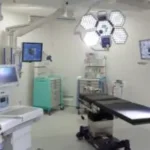Die Anschrift
304 Nordkardinal St.
Dorchester Center, MA 02124
Arbeitsstunden
Montag bis Freitag: 7:00 - 19:00
Wochenende: 10:00 - 17:00
Die Anschrift
304 Nordkardinal St.
Dorchester Center, MA 02124
Arbeitsstunden
Montag bis Freitag: 7:00 - 19:00
Wochenende: 10:00 - 17:00


In modern surgical practices, the choice of operating table is crucial for ensuring precise surgical maneuvers and optimal patient outcomes. This blog delves into the extensive benefits of Mechanical Operating Tables (MOTs) and their role in revolutionizing surgical procedures. MOTs integrate advanced mechanical principles to enhance patient positioning, surgical accessibility, and overall procedural efficiency.
Operating tables have evolved significantly from basic wooden platforms to sophisticated MOTs equipped with motorized controls and ergonomic features. This evolution reflects the healthcare industry’s commitment to improving surgical precision and patient comfort. MOTs today are designed to accommodate a wide range of surgical procedures across diverse medical specialties, from orthopedics to neurosurgery.
Mechanical Operating Tables are distinguished by several key features essential for modern surgical requirements:
The integration of MOTs into surgical theaters offers significant advantages over traditional operating tables:
Real-world applications demonstrate the effectiveness of MOTs in various surgical scenarios:
Comparing MOTs with traditional tables highlights their superiority in terms of functionality, durability, and cost-effectiveness:
A detailed exploration of MOT design elements and functional components underscores their operational advantages:

| Besonderheit | Mechanischer OP-Tisch | Traditional Operating Table |
|---|---|---|
| Range of Motion | Extensive | Begrenzt |
| Precision Control | Hoch | Basic |
| Haltbarkeit | Robust | Mäßig |
| Patientenkomfort | Ergonomic | Standard |
| Anpassungsfähigkeit | Versatile | Begrenzt |
Mechanical Operating Tables represent a pivotal advancement in surgical technology, offering unparalleled precision, versatility, and ergonomic support. As healthcare continues to embrace technological innovations, MOTs are poised to become indispensable tools in achieving superior surgical outcomes and patient satisfaction.
Q:What distinguishes a Mechanischer OP-Tisch from traditional tables?
A:MOTs feature motorized controls for precise positioning and ergonomic design, enhancing surgical precision and patient comfort.
Q:How do Mechanical Operating Tables contribute to patient safety?
A:By providing stable support and precise positioning, MOTs reduce the risk of intraoperative complications and improve surgical outcomes.
Q:Are Mechanical Operating Tables suitable for all surgical specialties?
A:Yes, MOTs are adaptable and can be customized to meet the specific requirements of various surgical disciplines, from orthopedics to neurosurgery.
Q:What considerations should hospitals make when investing in Mechanical Operating Tables?
A:Hospitals should evaluate the range of motion, control precision, durability, and long-term cost benefits of MOTs compared to traditional tables.